The Q&A: Clare Joy, organic grower and saviour of soil
Why your tomatoes taste so bland – and other words of wisdom from the world of organic veg
You’re reading The Earthworm, a brand new newsletter that takes a sideways look at the world of gardens, gardening, horticulture and all that good green stuff. If this is your first time here, you can catch up on anything you’ve missed by following this link. Subscribe now for free and join the community!
Think back to how you were feeling when the first lockdown was announced. We laugh now about how we briefly became a nation of banana bread bakers, but for most of us at the time, the overwhelming feeling was one of panic. Panic and paranoia. Suddenly, a trip to the supermarket felt reckless, dangerous even. Delivery slots became rare commodities. Ashamed that I hadn’t thought to do so sooner, I signed up to a local veg box supplier, Organic Lea.
The produce – delivered to one of a number of pick-up spots in the local area – was, and remains, superb. As with many similar schemes around the country, the veg box combines produce grown at Organic Lea’s own site with goodies supplied by a number of other local organic growers.1
As well as feeling grateful to be able to depend on a regular supply of tasty organic vegetables, these weekly deliveries also made me aware of the changing seasons in a way that I had never wanted or needed to before, despite my own flirtations with growing my own. I’d never thought twice about buying strawberries in November; and previously if I was bored of eating root veg in autumn, I’d just buy a packet of plastic-wrapped courgettes. But suddenly, with our seasonal, locally-grown veg box, we learned inventive ways of preparing black Spanish radish for the sixth consecutive week, and later celebrated the first tomatoes, aubergines and chillies of the year.
These days, I am proud to say that I had a hand in the production of the vegetables which I collect from a locker outside a local church each Thursday afternoon. Last year I completed a course in work-based horticulture, delivered at Hawkwood, the 12-acre home of Organic Lea, in Chingford, northeast London.
Hawkwood is a very special place. Flanked on three sides by the westernmost tip of Epping Forest, and with hill-top views over the vast reservoirs of the Lea Valley, it is an oasis of organic optimism; a tranquil, earthy place to leave the stresses of the city behind and connect with the soil.
Organic Lea – these days managed by a co-operative of 24 members, supported by a cohort of volunteers and learners – have been the custodians of Hawkwood since 2008, and growing on a number of other smaller sites since 2001. With three acres given over to vegetable production, and three to fruit, the rest of the site is a biodiverse haven for all manner of wildlife. And people, of course.
I returned to the site a few weeks ago to catch up with Clare Joy, a founding member of the co-op, who these days is responsible for the training and volunteering aspects of Organic Lea’s work. Or, as she puts it, “that place where people and plants meet”.
Kindly, curious and deeply passionate about people, plants and planet – and how all those elements can and should work together in a sustainable, harmonious way – Clare chats to me in her soft Hartlepool accent as we walk-and-talk our way around the fields, before sitting among the sun-soaked salads in the glasshouse. We talked about organics, tasteless tomatoes, and pot-grown veg, among other things. Dig in.
This interview has been edited for length and clarity.
What is organic growing? And why bother doing it over other forms of growing?
Organics is about treating the environment with respect. It’s about working with nature and not against it. The current food production system is heavily polluting – it’s not only polluting the soils that we rely on, it’s also polluting the rivers, it’s polluting the atmosphere, it’s decimating valuable wildlife. So those are all the things that organics isn’t. But far more than that, it’s not just saying: ‘That’s shit, let’s do something a bit better’, it’s also a regenerative way of looking at the environmental crisis and the global food crisis that we’re in.
What do you see as the biggest benefits of organic growing?
The two pieces of hope that I hold close when it comes to organic food and farming, is number one: its ability to capture carbon. So the ability of soil to soak up carbon and therefore counter some of the atmospheric change that is happening because of our way of living – not just our way of farming, but our way of living. The second thing for me is its ability to see us through times of food crisis and times of famine, which is going to be increasingly important as well. That’s the big stuff. Then underneath that you’ve got the fact that it employs more people, it creates a healthier society in terms of the food that we eat, I mean, it’s a no-brainer!
So, I get my food from a supermarket, and there’s all this fruit and veg there, and every now and then there’s a shelf containing the same thing as the one below, only it says “organic” on the label, and it’s more expensive. I think as a result, organic is seen as a premium thing – what is that down to?
I think we are, unfortunately, living in a time when food has become really cheap, and the mass industrial production system, that is polluting and transforming the environment in a potentially irreparable way, is about producing cheap food. I think that we as a culture, as a society, have driven down the cost of food because we want to pay for other things; goods that we don’t need. I mean, it’s a cultural shift. And I think on top of that, the way we household budget has shifted.
I remember my grandad sitting down with me and saying: ‘I spend a quarter of my money on food, I spend a quarter on my rent, I spend a quarter on making sure my shoes are repaired, and then that quarter goes to my holidays.’ He was a ship carpenter up in Sunderland, and I remember that was his way of looking at the world. The situation we know now, say, in the south-east, is that people are spending two thirds of their income on rent. We’ve got out of balance, and that is one of the reasons we can’t look at feeding ourselves in a way that doesn’t just nourish us, but nourishes the planet as well.
It’s the culture of convenience, and it also means that most of us are now out of touch with seasonality, because we can get pretty much any food at any time of year, and at almost the same price.
We’ve lost that love of going: ‘I’m going to make this turnip work for me. This might not be tomato season but it’s turnip season, and I can do something brilliant with turnips.’ Our relationship with food has changed so dramatically.
And does the work you do here change the way you approach your own grocery shopping? I mean, will you not eat a tomato other than between, say, July and September?
No, because I know that it tastes rubbish. It really does. I think you learn to value taste. We’ve worked with several really lovely chefs over the years, and there’s all sorts of ways in which our lives are quite different to theirs, but we totally meet eye-to-eye when it comes to the quality of taste of something that has been grown in nourishing soil and harvested at its peak. Whereas the tomatoes we’re getting at this time of year, they’re absolutely tasteless.
It feels like organic growing is becoming more mainstream – not to say widespread – than it used to be, and it’s linked in people’s minds to the climate crisis and protecting nature. But when you started Organic Lea, your motivations were much more political, or ideological, weren’t they?
I’d not really thought about that. I think you’re right: at the time that we founded this, the broader movement that we were part of would have been called anti-capitalist. That was very much the vibe of the time: the economics has to change. And organics did seem fringe 25 years ago in a way that it doesn’t seem fringe now, I think that’s right. But that’s because, as a whole, we haven’t listened, and it doesn’t seem fringe now because, I would say, things are getting more urgent, actually around mental health and around the climate – those other urgencies have put this even more on the agenda.
You’ve just celebrated a big birthday at Organic Lea, but how did it all begin?
In February, it was 21 years since soil was first turned in Organic Lea’s name. It started with a group of people feeling very clear that if you wanted to change the world, food was a pretty good place to start.
At the time, a group of us had moved from Bradford to London, and ended up on a bike ride going up to Hertford on the River Lea with a little book about the food-growing heritage of the Lea Valley. Inspired, we wrote a letter to all of the county councils and borough councils from Bow up to Hertford, saying: ‘We’ve got a really good idea: we want to regenerate the food-growing heritage of the Lea Valley… Got a bit of land?’
It was Waltham Forest Council that got back to us and said, ‘we’re not sure about regenerating the food-growing heritage of the Lea Valley, but we’ve got this derelict site in Chingford in the north of the borough – you can have a go with that if you want’. At the time, we were squatting in Peckham, on the other side of London, but you’ve got to take what you’re offered. And so that was the start of Organic Lea.
Did any of you have any experience of farming or market gardening?
No no, it was all learn-by-doing, and evening classes. But we all came with this commitment to gaining knowledge, deepening knowledge, and holding a commitment to working the land; to that being the force that grounds us, and the project that anchors us.
Do you think the site as it is today gives away your greenness when it came to growing in those early days?
When we took on the site, everything we knew was from the allotment, or from working on tiny pockets of land. So we thought, let’s just stick to what we know. And when farmers come and visit us, they stand at the bottom of the Entrance Field, they scratch their chins and say, ‘we can tell you’re gardeners, not farmers’. And we’ll say, ‘well we never pretended to be anything else, but why?’ And they go, ‘well, you don’t be growing 10 different crops in a field, that’s just heavy work’. Of course, because that’s what you do in an allotment – and if you took a 6m x 6m area of that field and plonked it in the back garden, you’d be doing exactly the same. That’s how you can tell that field is the first thing we did here, because it really mirrors the smallness of our experience at the time.
It’s been 13-odd years since you moved to this site – are you not tempted to correct some of those early decisions?
I think you can’t take that small scale urban gardener out of us. We’re not pretending to be farmers. The Entrance Field really demonstrates that, and maybe never lets us forget it. That field is also where, when the Soil Association did the organic matter test on the soil, it was showing 20%. If you have 5% organic matter in your soil it’s ideal – it was showing 20% organic matter in that bottom stretch, and that's absolutely down to tens of thousands of volunteers lugging compost into it over the years. This is a carbon sink. We’re capturing carbon in this part of the site like a rainforest!
But across the site as a whole, we have changed our approach to growing, with market garden design and productivity in mind. It’s certainly not an allotment anymore! We’ve continued to learn with the site’s harvests, and sought to rise to the challenge of making peri-urban market gardening work, on every level.
What do you mean when you say the field doesn’t let you forget?
For me, it’s really important to remember the journey that grows an organisation. Because it’s not always an easy journey, and that’s OK, and I think this field reminds us of that. It’s about starting in a little place and just working with what you know, and starting somewhere, isn’t it?
You work as a 24-person co-op – has that been smooth sailing or have there been tensions?
Plants are easy, people are complex! Human organisation is a beautiful and an amazing thing, but as we all know, you have to work at it and work with it, and be challenged yourself by it. So I think, at that people level, we’re always having to adapt and consider and change ourselves, but the land really grounds us. And turning up and coming through those gates four days a week, it’s like, no matter what else is going on, you can just find a sense of peace and a commitment to working through it. Whereas I don’t think if I was working in an office in Tower Hamlets – which I have done – I’d have the same resilience, sometimes. I think there’s a lot to be said for that.
What are your ambitions for the Organic Lea project, and where it sits within the wider world of organics?
My vision would be to see more small-scale organic farms and market gardens getting the support and respect they need in order to thrive. And we at Organic Lea will do everything in our power to support long-term training needs and access to land campaigns in order to make that happen.
At a personal level, I also have a dream about how to bring horses – rather than tractors – back into the process. Horses are the story waiting to happen in small-scale English agriculture. In terms of low impact organic horticulture – and organic horticulture needs to be low impact in terms of soil management – they really are. With the right humans alongside them, they’re very good at treading the path that needs to be trod. In Ireland, in projects like this, they’ve got a couple of horses. Italy, North America, it’s there, it really is.
Let’s talk bottom line: are you able to make it all work, financially?
Fifty per cent of our income is through the produce sales and the box-pack buying and selling. Then 20% is from contracts, like the educational courses, and 30% is from grants – occasionally, for example, we get a big multi-year grant from a lottery project.
It’s a shame that, if you think about this as a model that could be rolled out up and down the country, that if only 50% of your income comes from the produce, it doesn’t seem like a lot of people would look at that and go, ‘oh we’ll do that as well then!’ Because there’s a big gap…
This is a 12-acre site, and we’re growing on six of those. I would say when you get over 14 acres, you can probably start to make the production ends meet. Underneath that, if you talk to any of the small farmers that we work with, they have all got sidelines; they’re running a bed and breakfast, or one partner’s doing another job.
We talked about the business model, about where the money comes from. But what do you think needs to change at the highest level in order to allow more set-ups like this to exist?
For me it would be two things, but they’re linked. I think we need to change the land ownership system in this country. We have the most unjust land ownership system, outside of China, in the whole world. It’s just phenomenal that 70% of the land is owned by 5% of the population. That makes it very difficult for people that want that 14 acres that we talked about earlier, or better still that 20 acres. If we’re going to change the food system, we need to change the land ownership system. That’s fundamental. Second to that, in tandem to that, there’s a massive skills and training gap. We need those apprenticeships, we need that training system, which does not exist in this country.

Speaking of people, you’re very reliant here on volunteers. On the one hand everyone who volunteers here seems to get so much out of it, but on the other hand wouldn’t it be nice if you had a massive workforce, if you were able…
To pay. Yep. I think we use a lot of people on the site because training and participation is part of our values. We could work this land without volunteers if we put more light machinery on it, and we could design it differently, but we’re also choosing to make sure that people are part of the model, and we always have done.
Hence the courses and the educational aspect of what you do here, which feeds into that.
Yeah. And the opportunity for people to get somewhere else. To get out of Leyton, or Tottenham, or wherever it is.
It’s a unique location, a peri-urban space, right on the periphery of the city. A liminal space between the forest and the city…
Yeah, it’s an edge. You know in nature, the edge is the most fertile space. Where the sea hits the sand is where you get the most life. Where the forest hits the open plain is where you get the most life. And I think this an edge landscape in that regard.
Do you have a garden at home?
No, I grow in containers. I’m very proud of my containers. And my son’s learnt as much from our little containers as he has from coming here regularly. There’s a lot you can do in a super small space, a super non-space.
So how do you approach growing at home versus what you do here?
I totally follow my grandad’s budgeting philosophy on that one. I always do a root, I always do a leaf, and I always do a fruiting vegetable, then a quarter – the bit that was my granddad’s ‘save for the seaside’ – just random stuff that turns up and I want to see what it’s like. And that works really well for getting my son involved. I’ll say, what root are we going to do? And he’ll say carrots! What leaf? Spinach! What fruit? Cucumber! And then we always do flowers for pollinators.
I think when you're gardening in any space, you need to set boundaries, because when it comes to the garden, it’s as big as your imagination. When I’m teaching design I say: first, give yourself a way of putting a boundary around your designs. Set parameters. Parameters are good.
Have you got any good plant suggestions for growing with kids?
Miner’s lettuce is a great green. My son’s really good at eating his vegetables, and I think it’s partly because we got him some miner’s lettuce when he was two. It’s absolutely brilliant. It tastes like water when you’re thirsty. For kids it’s just amazing. And it’s full of vitamin C – choc-a-bloc. It’s called miner’s lettuce because it was grown in America during the gold rush. The miners would always have it because it grows quickly and would stave off scurvy. It’s brilliant.
If you live in Waltham Forest or its environs, you can sign up for the Organic Lea veg box scheme here. To follow in my footsteps and embark on a course or traineeship with Organic Lea, this is the link for you. And finally, to find out how to volunteer with Organic Lea, follow this link.
Did you enjoy this interview with Clare? Got any ideas for people who you’d like me to speak with in future? Email me, or let me know in the comments! I’ve got a bunch more interviews lined up for the coming weeks with people from every corner of the horticultural world. Subscribe now so you don’t miss out.
Where possible, all of the produce in the Organic Lea veg boxes is either grown on site or sourced from organic suppliers in the southeast and East Anglia, in order to limit food miles. Sometimes, owing to factors including global pandemics and extreme weather events, food has to be sourced from slightly further afield.

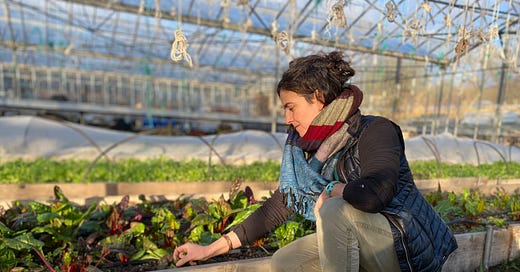


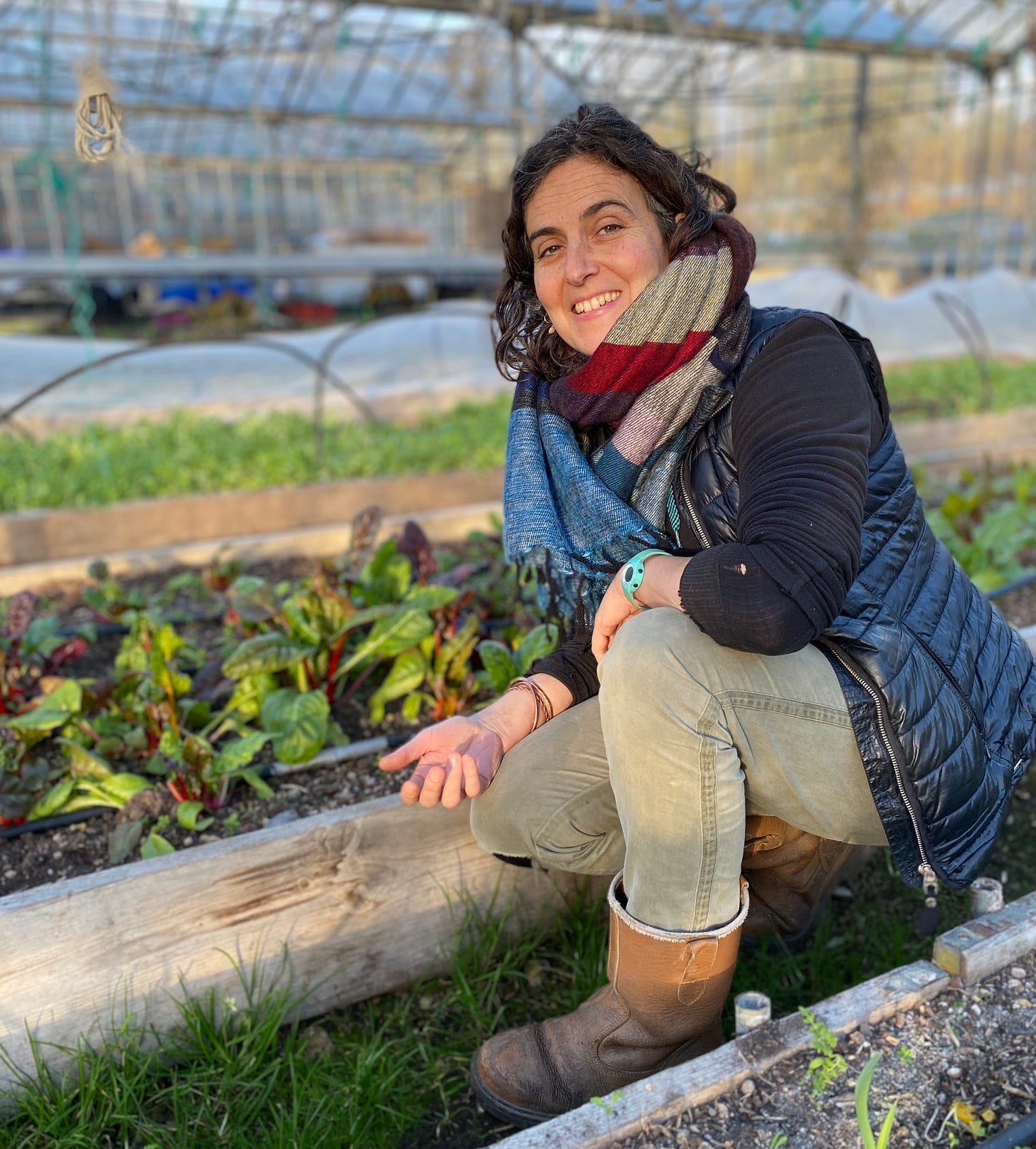
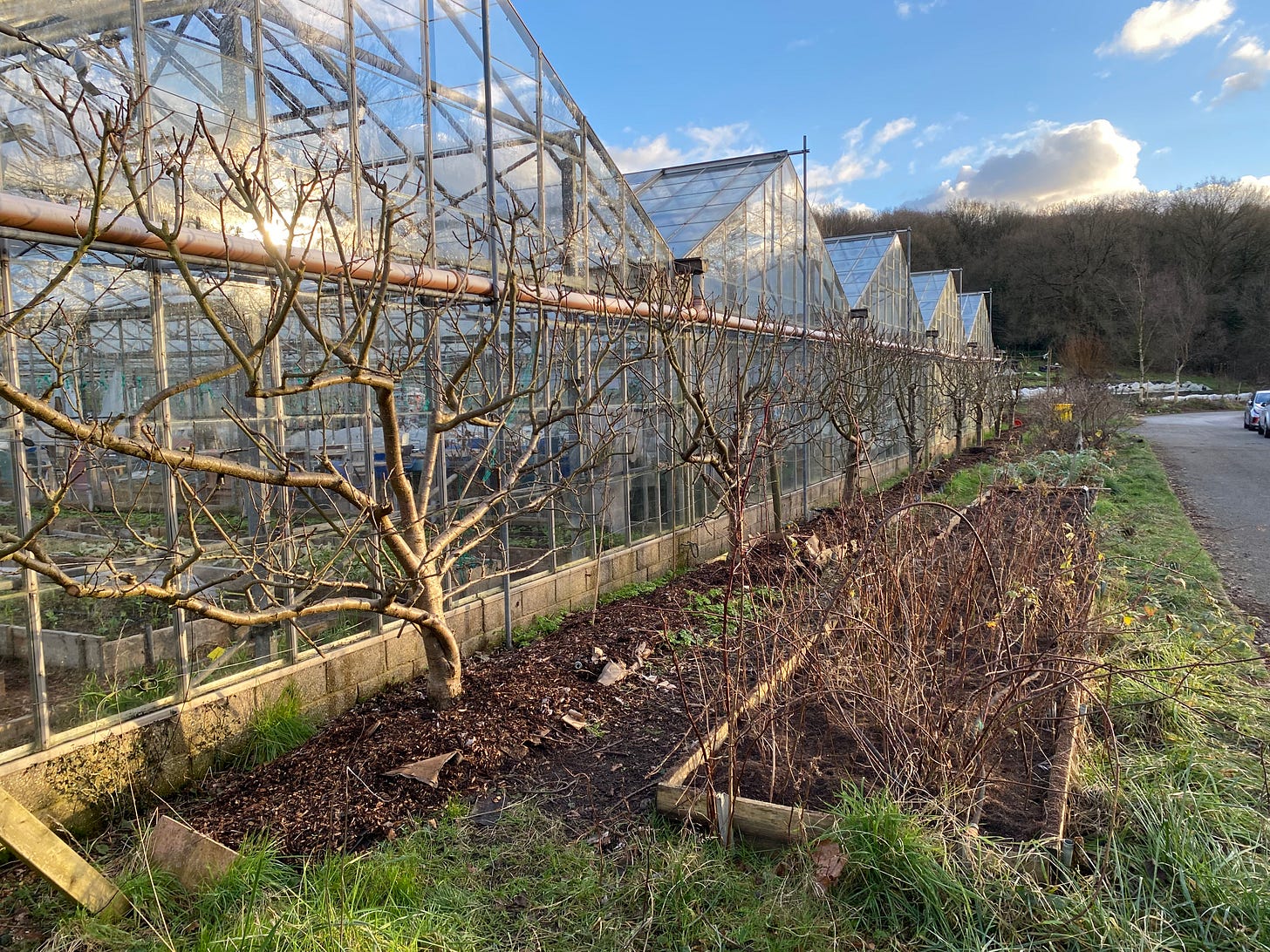
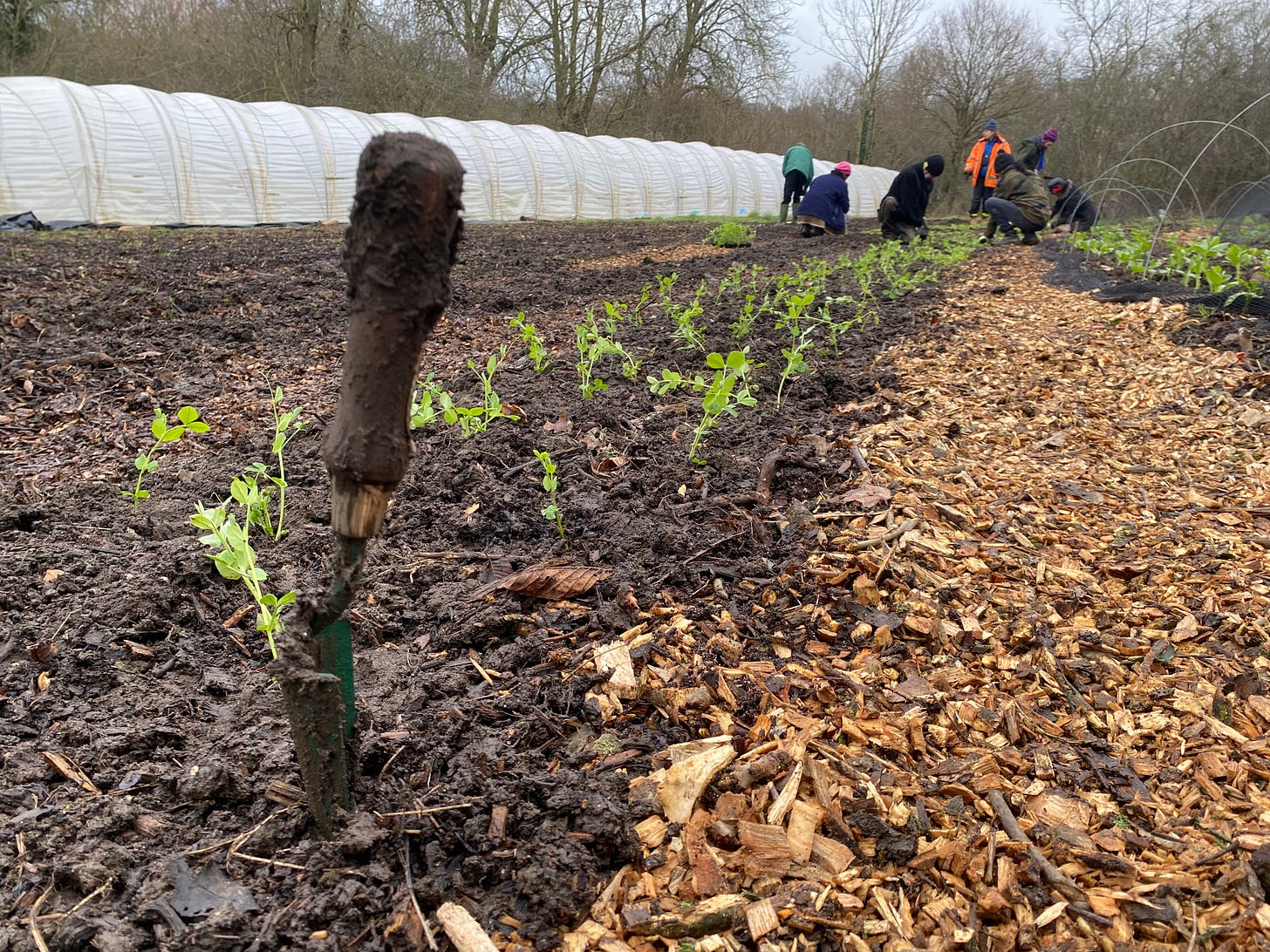
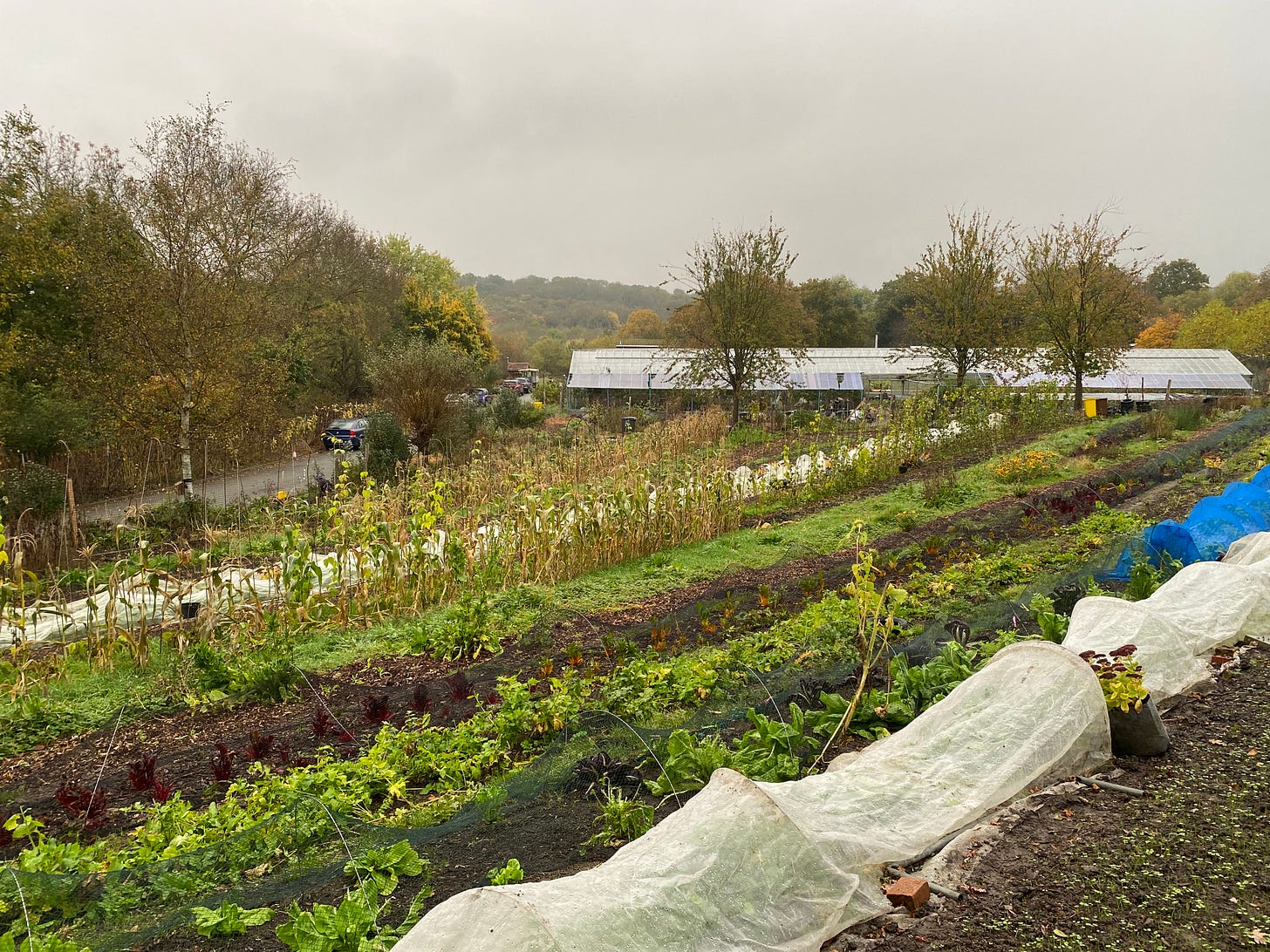
fascinating and heartwarming interview. thank you! Ellen Dahrendorf
So important to think about the why? In the Usa we have large scale organic farming which honestly is barely different from conventional farming in terms of being cost heavy on the planet, quite corrupted again the goal of profit over anything else. its become simply conventional farming with frills, dubious certification parameters and what we now call green washing - pandering to our desire to do the right thing without actually changing our relationships to resources. On the upside this has driven folks wanting a relationship with food to skip the labels and get in touch with local gardens and growers, very similar to the beautiful gardens here at Organic Leas. Being in relationship with your food rather than scaling up and creating more. Also minors lettuce is very rarely grown here - its a common wild green that indeed, was sometimes all the early settlers had. One of my greatest delights is introducing small children to the amazingly varied tastes of wild edibles ;)